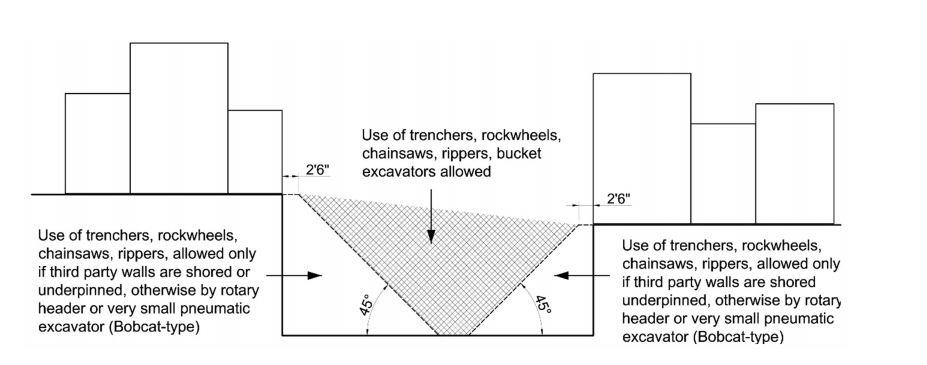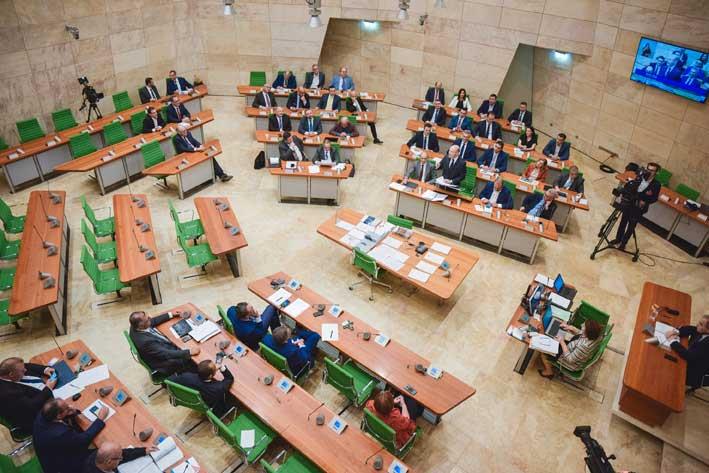A committee that was entrusted with the evaluation of the construction sector has found that a particular practice used within the industry is 'nothing short of playing Russian roulette with the lives of third parties'.
The committee was appointed by Prime Minister Robert Abela to evaluate the construction sector in Malta and assess any possible reforms required to further improve it. Abela had formed the committee soon after Miriam Pace's death on 2 March, 2020. Pace died as her Hamrun home collapsed. Excavation work was being carried out in an adjacent plot.
The report drafted by the committee (dated April 2020) was tabled in Parliament on Wednesday, while the Prime Minister spoke about a bill that would establish the Building and Construction Authority. The committee members were Chief Justice Emeritus Lawrence Quintano, lawyer Mark Simiana, geotechnical engineer Adrian Mifsud and civil engineer Mario Cassar.
The report found that certain shortcomings within the construction industry, together with some technical practices that are in common use in construction sites in Malta, should be curtailed to put people's minds at rest.
"Foremost among these is the current practice of excavating flush with the party walls, creating a vertical face of rock beneath the foundations of existing buildings. From a technical point of view, this inevitably results in significant weakening of the natural material supporting the building, irrespective of its nature (i.e. rock or soil), because lateral confinement is removed. The problem is exacerbated when the rock is fissured or when it is very weak"
The committee called the local industry's practice of "cutting the rock flush with the party wall using a trencher or a track-mounted chainsaw, prior to its bulk removal by other means," as a "very dangerous activity, which is now so commonplace that few dare to question its rationale."
It said that such cuts are often done under the pretext that these are necessary to isolate the neighbouring building from excessive vibration. "However, this is done at a time when it is not possible to identify the degree of fissuring in the rock, implying that this activity can significantly weaken the rock mass even before the actual bulk excavation has started. The state of safety of the neighbouring structures is therefore left to chance, because it is very difficult to predict the nature of the fissures before these are finally exposed. This is nothing short of playing Russian roulette with the lives of third parties."
The committee noted that this practice gained popularity because the rocks of the Maltese islands "are often sufficiently solid and unfissured to prevent collapse, but this is not always the case, as recent events have demonstrated. There is no measure of the gross reduction in factor of safety created by such activities - it is all left to pure chance. There is no measure of the inconvenience created when the foundations move (but do not collapse), compromising services and finishes of third-party properties in the process. This practice also compromises third party rights, as the adjacent property owner will be unable to utilise the common/boundary wall as a load-bearing element when considering additional floors, due to the resultant weakening of the foundations."
Another problem, the committee said, is the use of pneumatic hammers (JCBs) in hard rock. "This equipment produces a lot of vibration that is often of great detriment to third parties, both to their immediate well-being, as well as to the integrity of their property and its finishes, with subsequent lengthy Court litigation, which in most cases are ill afforded by the victims of such practices."
"The stability of third party walls and their foundations is best protected when the engineer responsible has understood what the ground is made of and how it can behave. Although ground investigation can go a long way towards obtaining such an understanding, this is often insufficient when attempting to figure out the complexity of rock mass discontinuities, in the local context."
This danger, the committee said, can be mitigated by commencing excavations from the central part of the site, such that the state of the rock mass can be understood prior to reaching the foundations of third parties. "This implies the curtailment of excavation next to party walls prior to opening up the central part of the site. The use of machines like, trenchers, chainsaws, rock-wheels, bucket excavators can be curtailed in a zone delineated by a 45 degree line starting from the statutory 2'6" (760mm) distance from the lowest and outermost point of the third-party foundations. Such machines can then be used elsewhere within the same site, since these machines can be useful if properly used. The remaining body of rock can then be removed by other less-disruptive machinery, like rotary headers, diamond wire, or expansive grout."

A number of recommendations were made to address this issue. The first is that the use of pneumatic hammer excavation equipment be restricted in certain specific sites, or specific areas in specific sites, where such use is ill-advised from the structural point of view.
The second, is to define zones in which specific excavation machinery cannot be used, to protect third parties. "Create concessions to this, as long as proper mitigation measures are in place, to encourage proper methodologies."
The third, is that excavation works should observe a distance of more than 2'6" (760 mm) from the adjacent/surrounding boundary walls, increasing at an angle of 45 degrees (or at a width to depth ratio of 1:1) depending upon the excavated depth. This would also depend on the type of rock/soil being excavated. This would be in lieu of the developer being bound to carry out underpinning/shoring in the boundary wall vicinity at his own expense, without any prejudice to third party rights.
In addition, the committee also made a recommendation to help curb noise pollution. The committee said that excavation work should be limited during certain hours of the day in inhabited/built up areas and that works be stopped if the noise/sound pressure level measured in the properties of third parties is exceedingly high beyond the level of tolerance.
Responsibility for building projects
A number of recommendations were made in terms of responsibility for building projects. The first, is that a clarification of roles and responsibilities on site and throughout the design, excavation and construction process is required. The committee also said that the Chamber of Architects and Civil Engineers should be informed of those cases where false information has been perpetrated by periti, and empowered to take decisions about disciplinary measures.
Among other things, it recommended making contractors responsible for a Works Method statement.

Building Construction Authority
The committee noted that the Building and Construction Agency (BCA) is a temporary agency, which will eventually be absorbed by the Building and Construction Authority (not yet in existence). The committee said that the concentration of all functions related to the building industry into one central public authority "is an essential ingredient in order to achieve a functioning, advanced and regulated industry." The committee stressed the importance of the existing entities being absorbed into one central authority. The Building and Construction Authority is meant to, in some form, fulfil this role.
The Committee also called for the introduction of the concept of the "building permit", as an autonomous and independent concept from the "planning permit", which is already in existence. The process by virtue of which this new building permit is to be issued should be the central function of the recommended central authority, together with the legislation or enactment of those policies by virtue of which a building process is to be determined as being acceptable or unacceptable, and the respective enforcement of its rules, it added.
The committee also made a number of other recommendations. For example, as a temporary measure until the authority is set up, a Building Construction Unit should be established as an internal consultee within the Planning Authority, to be consulted at planning application stage rather than at post-permit/execution stage, also giving time for affected third parties to submit representations, the committee said.
It also called for the introduction of appropriate legislation to ensure proper enforcement against specified acts and to impose penalties which act as an effective deterrent. "One could also consider the criminalisation of certain breaches. In the case of development consisting in the erection of additional storeys on an existing building. the developer's Perit must produce the necessary studies to prove that the development is technically possible without causing distress to third parties. The developer's Perit becomes responsible for all consequences resultant from a breach of this duty."
The committee also suggested the introduction of the concept whereby an insurance company providing cover to the contractor or developer would be obliged to indemnify third parties, saving any right of redress it may have against the insured party as a consequence of any breach of policy.
As part of the longer-term goals, the committee suggested having the Building and Construction Authority manage and train a cohort of officers and organise their deployment on building projects. All officers should have the proper licensing (MCAST Certification in construction).
The bill currently being discussed in Parliament, that would set up the Building and Construction Authority, highlights what the functions of said authority would be.
Among other things, it will perform the functions which were previously assigned to the Building Regulation Board and the Building Regulation Office, as well of the Building and Construction Agency and the Masons Board. It will also have to issue and enforce good practice guidelines and methodologies, policies and regulations aimed towards the improvement and sustainable management of building and construction practices. It will also act as a centralised office for the receipt and processing of complaints, reports and assessment of information related to alleged breaches; and will also monitor the performance, safety and quality of buildings and constructions in Malta.
The Bill, also states that there shall be a National Building Code for the Building and Construction Industry, which shall set out the minimum standards pertaining to the sector.
The code shall aim to cover different aspects of regulation, and the improvement and sustainable management of the building and construction industry. These will include the structural integrity of sites and buildings, fire safety, site preparation and resistance to contaminants and moisture, demolition and excavation practices, among others. The authority will also keep a register of service providers.